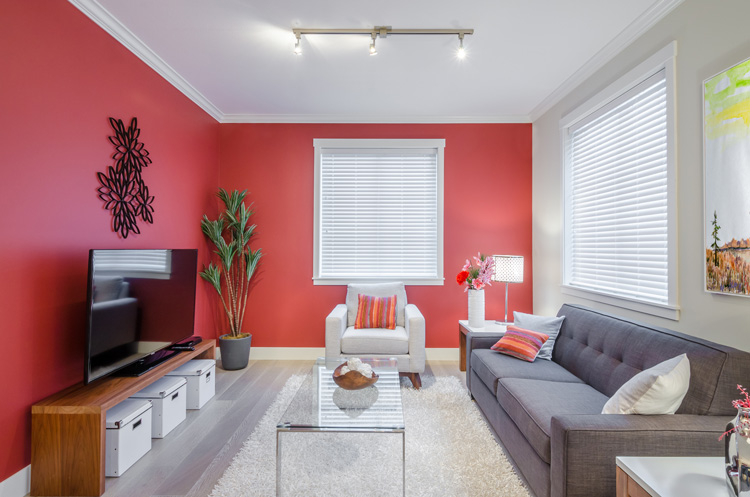Decorating Your New Home – A Series from South Pointe
If you recently purchased a new home from South Pointe in lovely Gainesville, Florida, then you probably felt the South Pointe sensation: the feeling that comes when the accommodating designs and superior craftsmanship of our pristine houses beckon buyers to start settling in at first sight. The desire to start and finish the move-in process with the greatest of haste is a strong temptation, but we can guarantee two things that should help you handle the pressure. First, South Pointe homes are built to last, so you can count on living in one for a very long time, and second, because of their durability, there is no rush. We want you to ease into the affair of decorating so that you can create endearing memories with your new home. You probably already know that this is love, but that doesn’t mean you can’t take the time to develop the deepest level of commitment and companionship with your personal piece of South Pointe property. Your relationship with your South Pointe residence will be the real thing, so you can look forward to collecting all the warm fuzzy feelings you want by adorning every room in your new home to your exact specifications.
Even though it takes time, decorating your new home really can be fun. However, while your new place is the perfect blank canvas for capturing the creative depths of your personal style, anxiety might set in the longer you stare in confusion at all those white walls. You may be wondering,
“Where is everything going to go? How am I going to make it look good? Where do I start?”
If you fear that your uninformed efforts will only make the space worse, then check out this new blog series from South Pointe that will provide some crucial decorating advice on how to really start living with your South Pointe new home. Decorating your new place may seem like a very involved task, but in the coming posts, we will break down the decorating approach into the manageable aspects of every room and direct your perspective to see how they can all work together to create something beautiful and habitable. This first post in the series will focus on the one detail of every room that must be determined first: color.
Important Steps for Properly Decorating with Color
- Determine a color scheme.
In each room of the house, start off the decorating process by choosing a color scheme. This step is crucial to achieving a mood for the room with which you are most happy and content. The wrong color palette can really offset the comfort levels of a living space, but the right palette can enliven anyone who enters. Also, you have options has to how much you employ a particular color scheme: you could carry the same palette through the whole of your new home; you could repeat certain colors while adding new ones in each area; or, you could come up with a completely different color scheme for every room in your house. Only you can say how much color you can handle!Furthermore, your color palette can be unique to you: you do not have to choose a preset combination from the paint store or a home magazine. If bringing different colors together sounds confusing to you, remember that the easiest way to simplify the process is to find inspiration. A source of color that intrigues you can usually demonstrate which colors look good together already, and following the color scheme of your inspiration should ensure that you will actually enjoy the environment that your palette creates. Good moments of inspiration can come from places like nature, your geographical location, the view from the room’s windows, a work of art, a piece of fabric, an accessory, etc. There is no rule about what can inspire you; the only command for the colors of your room is that you have some! Choose colors first and choose colors you love.
- Use color to tie everything together.
An effective and simple way to dictate the tones of a room is to paint the walls. This move is not expensive, but it can be formative in drastically altering the atmosphere of a room. Painting the walls gives you the exciting option of spreading different colors all throughout your new home, as well as the ability to balance out bright colors with calmer ones in each room to help you keep your sanity. Accenting boldly colored walls with muted furniture and accessories can enable all of the colors to reach the full potential of their impact, and you can even transform a vibrant color into a harmless neutral by applying it to the room in diverse amounts of depth. Bathing a room in actual neutral colors can evoke a sense of calm and serenity while obtaining the opportunity to highlight textures. If you don’t want to paint the whole room, you can take smaller steps to anchor the room in color, such as painting or wallpapering an accent wall, or simply putting up some fun wall decals or stunning works of art.

- Use color to change the size of the room.
Strategically placed color can change your overall impression of the dimensions of a space. A lighter color on the walls can make a room seem more streamlined and spacious, while darker colors tend to bring the walls closer. A lighter tone of the same color on the ceiling can make the walls look taller, and a darker version on the ceiling can optically broaden the room. Repeating the same color, such as white or beige, on the ceilings, walls, and floors can enlist and unite every surface for the purpose of transforming the room into a empty canvas to be punched with color in random places. This technique can make the room feel more sizable. On the other hand, stuffing in a greater range of colors and textures can bring an oversized room down to scale and accomplish more coziness. - Integrate complementary accessories.
Rugs, pillows, pictures, lamps, and other decorative pieces help make the correct color statement in the room when they are found nestled here and there in the appropriate hues. Everything does not have to match, but it does have to coordinate: look for items tinted in variations within the same range of a particular shade, and offset the main color in a room with a pop from the opposing side of the color wheel. Balance light and darkness in a room by bringing in equal amounts of warm and cool colors. A helpful hint regarding the amount of different colors to use throughout a space is 60-30-10, which means that one color should dominate 60% of the room, usually the walls; a secondary color should be appear in 30% of the room, and the accent color should only be mentioned in 10% of the room. This formula will keep the color scheme of the room agreeable and will prevent you from accidentally constructing a kaleidoscope in any space in your new home.
Next Phase
Once you have chosen your color palette and roughly mapped out how you will use color in each room of your new home, you can move on to planning the next set of decorating particulars in part2: Decorating Your New Home: Space and Furniture.



